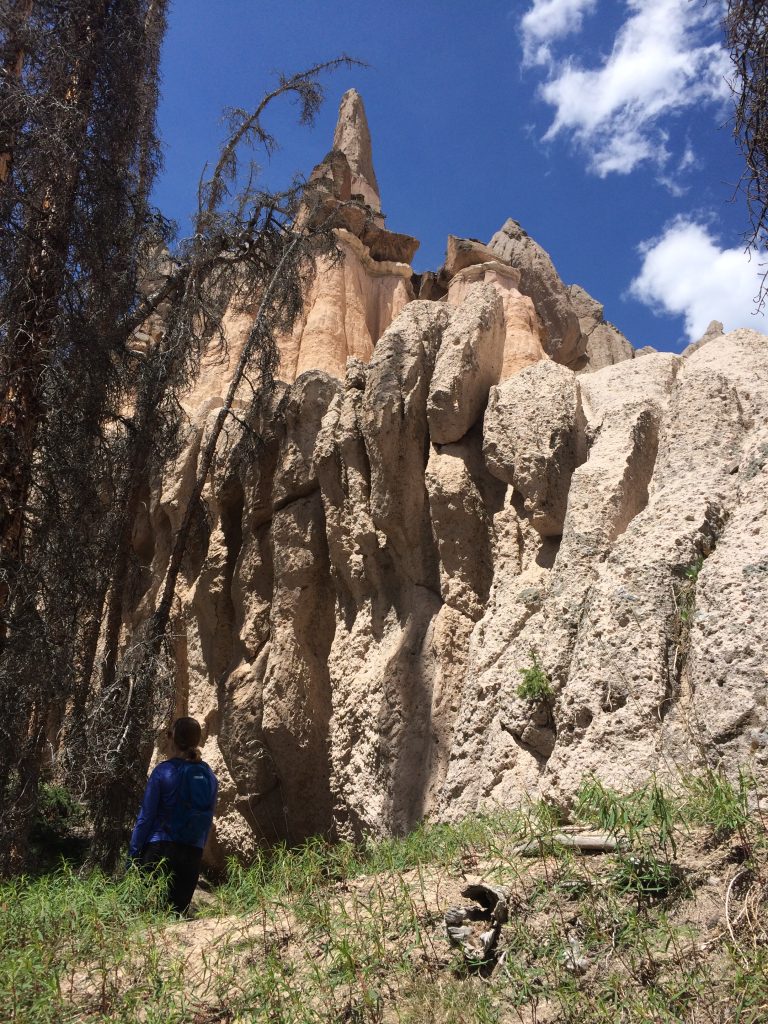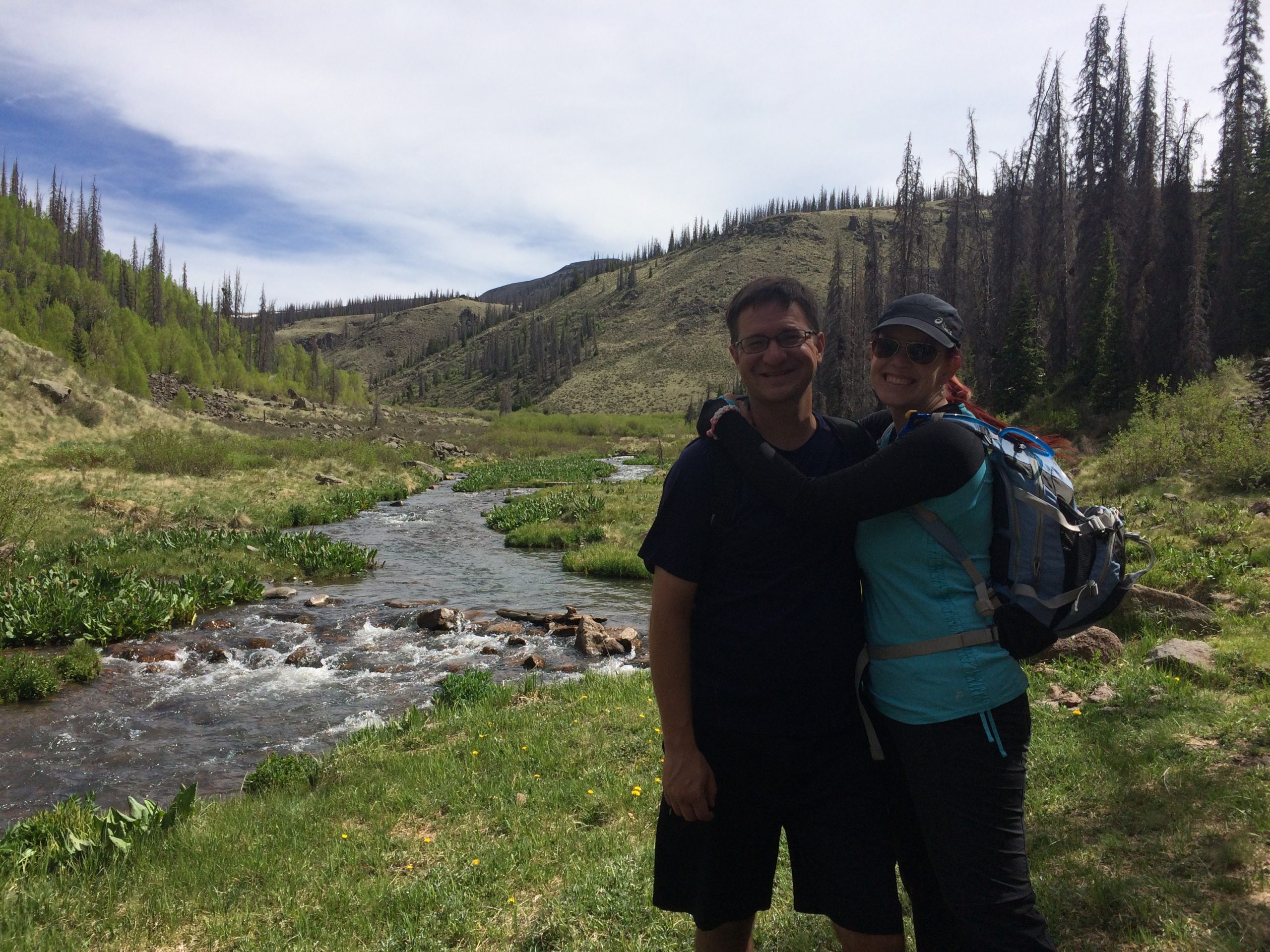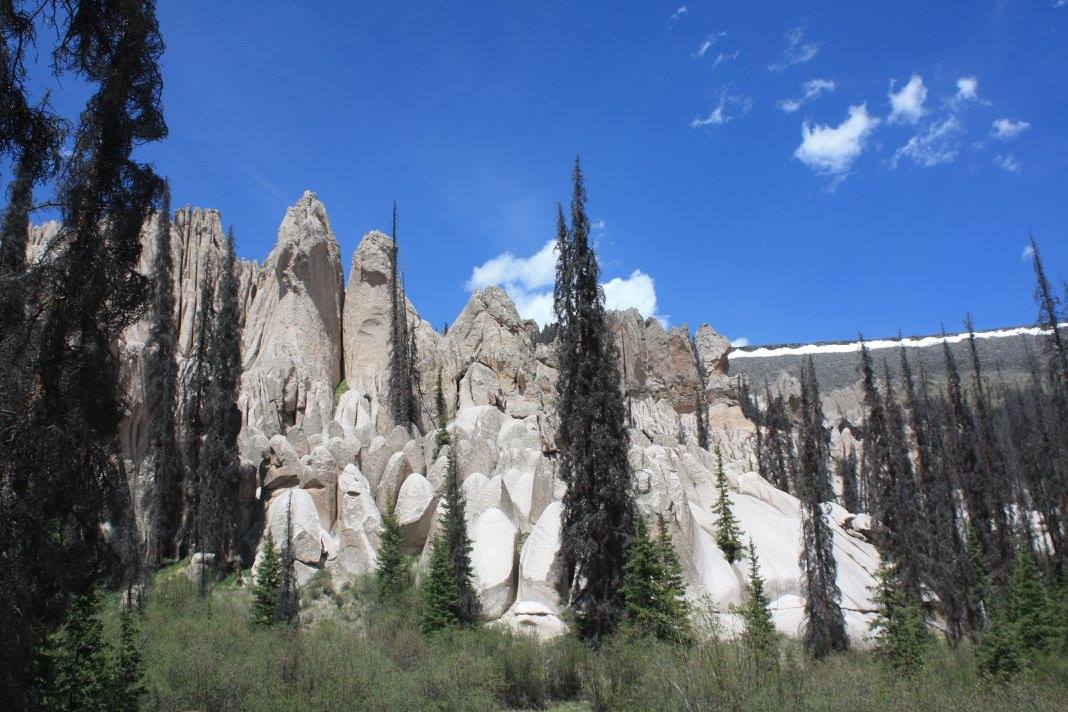Exploring Wheeler Geologic Area
Wheeler Geologic Area was created from the fallout of Earth’s largest explosive eruption. When La Garita Caldera exploded millennia ago, it deposited 1,200 cubic meters of volcanic material throughout the state of Colorado. The Fish Canyon Tuff, as it has come to be known, can most easily be seen here at Wheeler Geologic Area. Nestled deep in Colorado’s San Juan Mountains, the tuff here has been well preserved over the years due to the surrounding valley. Wind and water have weathered the tuff over time, sculpting a dramatic landscape of spires.
Not very many visitors brave the 14-mile service road or 16-mile hike through the volcanic landscape. We not only love to explore volcanoes, but we love to discover the side of them that many people don’t get to see. Five of us began our hike at dawn from Hanson’s Mill, through thick forest and over age-old lava flows. (Catch up on the first part of our adventure here.) With the first stretch of our journey under our belts, we set off to explore the tuff formations at Wheeler Geologic Area.
Dragon’s Eggs
The trail rose steeply as we entered the 640-acre geologic area. Eroded tuff and ash covered the trail. It making it as slippery as a sand dune in places. Forest and foliage had taken root in the ashy soil and pines towered high above our heads. A creek bubbled across the trail and we hopped it, heading deeper into the monument.
One “Tuff” Hike – The Trail to Wheeler Geologic Area
After discovering that the La Garita eruption – the largest explosive eruption in the history of the Earth – was essentially in my own backyard, I had to explore it. The caldera itself is massive, well over a thousand square miles. It would take me years to explore it all on foot. For now, I decided to focus in on one of the most obvious traces of the ancient eruption: Wheeler Geologic Area.
Wheeler Geologic Area is tucked away deep in the La Garita Wilderness in southwestern Colorado. When La Garita erupted, huge amounts of ash and pyroclasts fell out here. The heavy ash compressed together and became volcanic tuff. Now named the Fish Canyon Tuff, Wheeler has been well protected over the millennia by the deep valley where it fell. Erosion has carved away at the tuff deposit over the years, leaving spectacular formations of gray and white behind.

We had tried to plan our adventure to Wheeler Geologic Area for several years after I discovered the existence of La Garita. Monsoon rains and raging wildfires kept us from making the trek until, in 2017, we got our chance. The hike to and from Wheeler Geologic area is a long 8 miles; 16 round trip. But the views and volcanic formations that we saw along the way were absolutely worth it, even if it was one “tuff” hike.
La Garita: History’s Most Epic Eruption
As a kid, I wanted nothing more than to have a volcano or two within exploring distance. Given that I was 8 years old and couldn’t drive, that distance was about five miles. My friends and I used to make up stories that the nearby mountains were volcanoes and could erupt at any moment just to sate our sense of adventure. As far as we knew, the only volcanoes in the United States were Yellowstone, in Hawaii, or along the West Coast. The rest of the world’s volcanoes were in far off, exotic places like Japan or Iceland. Little did we know that real volcanoes were closer to home than we ever imagined – including the most explosive and epic eruption in Earth’s history: La Garita.
The San Juan Volcanic Field
La Garita Caldera sits in the middle of Colorado’s San Juan Volcanic Field. Located in the southwestern part of the state, the volcanic field was once extremely active. Two continental plates once collided here and caused the ground to fracture and faults to form. These faults allowed heated magma from the Earth’s mantle to rise and pool in massive magma chambers beneath the crust. The results were often explosive.



